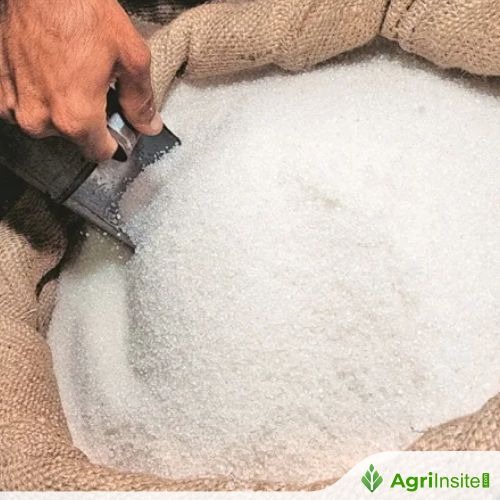How Antitrust Shaped Colombia’s Sugar Market and Boosted Downstream Firm Outcomes

A World Bank study led by James Sampi and Ekaterina Vostroknutova analyzes how Colombia’s antitrust actions in the sugar industry impacted downstream manufacturing. The 2011 dominance-abuse ruling improved firm profitability, while the 2015 cartel breakup boosted output and employment. Findings highlight antitrust enforcement’s critical role in unlocking productivity, profitability, and economic development in emerging markets through fair competition.
In a robust and timely study led by James Sampi of Vrije Universiteit Amsterdam and the World Bank, along with Ekaterina Vostroknutova of the World Bank, the researchers investigate how antitrust enforcement affects firm performance in Colombia’s downstream manufacturing sectors. The research, published under the World Bank’s Prosperity Vertical series, centers on two interventions by Colombia’s competition authority, the Superintendencia de Industria y Comercio (SIC), within the sugar market. These interventions targeted two distinct forms of anti-competitive behavior: abuse of dominance in 2011 and cartel collusion in 2015. Using comprehensive firm-level data from Colombia’s Annual Manufacturing Survey, the authors investigate how competition policy can alter firm-level dynamics like sales, input use, employment, profitability, and productivity in developing country contexts.
Breaking a Dominant Grip: The 2011 Case
The 2011 enforcement action addressed an abuse of dominance wherein a leading sugar-processing firm had engaged in collective bargaining with over 400 sugarcane farmers to inflate ethanol prices. This arrangement, established through representation agreements, resulted in an ethanol price spike of over 50 percent between 2008 and 2009. Importantly, sugarcane production remained stable during this period, which meant that downstream sectors such as chemical and alcoholic beverage manufacturing were hit primarily by inflated input costs rather than supply shortages. The SIC launched its investigation in 2010 and imposed sanctions in 2011. This intervention served to dismantle the price-fixing mechanism and restore input market competition.
Cracking the Cartel: The 2015 Intervention
The second case, unfolding in 2015, was far broader in scope. It involved twelve major sugar producers coordinating supply quotas and engaging in practices to obstruct sugar imports, especially from Brazil and Bolivia. These collusive actions effectively controlled around 80 percent of Colombia’s raw sugar production and caused a sharp 20 percent decline in sugar output by the end of 2010. The cartel’s manipulation extended to using a logistics company to threaten dumping practices if external producers tried to enter the Colombian market. This restricted access for downstream sectors, particularly food manufacturing industries reliant on processed sugar, prompted complaints and triggering SIC’s antitrust investigation, which culminated in a decisive ruling in 2015.
How Firms React: Comparing Outcomes Across Cases
The two antitrust interventions triggered contrasting responses among downstream firms. Following the 2015 collusion crackdown, affected firms expanded their operations significantly. The data shows substantial increases in employment, value-added, and intermediate input usage, signs that firms previously operating under supply constraints could now meet market demand. Yet, these gains were not accompanied by any measurable rise in productivity or profitability. The takeaway: the cartel had artificially suppressed the supply of sugar, and the lifting of this restriction allowed firms to scale up, albeit without any innovation or efficiency leap.
Conversely, the 2011 dominance-abuse intervention had a different effect. With the ethanol price distortion eliminated, downstream firms experienced notable gains in price-cost margins (PCM) and markups. Profitability improved, but without corresponding increases in employment or output. Firms benefited from reduced costs but did not expand production or enhance productivity, suggesting that demand conditions may have limited their ability to grow. Instead, they retained savings and improved margins, a rational response in markets with elastic consumer demand or where competitive pressures deter price hikes.
Why Price Pass-Through Was Limited
A particularly insightful aspect of the paper lies in its analysis of price pass-through. The correlation between input prices (like ethanol or sugar) and final consumer product prices (such as alcoholic beverages or bakery items) remained weak. This muted pass-through reflects several structural characteristics: sugar and ethanol comprise a small share of total production costs (less than 10 percent), firms may absorb shocks to maintain competitiveness, and they may already operate with high markups that allow flexibility in pricing. This finding is crucial, as it implies that observed changes in firm performance cannot simply be chalked up to cost-passing, but rather stem from deeper shifts in input access and profitability.
Broader Lessons for Development and Competition Policy
The dynamic analysis of firm responses, using event-study methods, supports the interpretation that these regulatory shocks were exogenous, and there were no observable behavioral changes prior to the SIC’s investigations. Post-intervention gains tapered off over time, hinting at the short-to-medium-term nature of benefits unless followed by continuous enforcement. Additional robustness checks focused on market leaders, larger firms with greater sugar-dependency, confirmed the broader patterns: production expansion followed collusion dismantling, and profitability gains followed dominance correction.
Taken together, this study makes a strong case for the broader economic role of antitrust policy in development. The evidence from Colombia shows that the form of anti-competitive behavior being addressed, whether collusion or abuse of dominance, directly influences how firms react. Breaking up cartels unleashes suppressed production capacity, while correcting pricing power distortions improves margins. These effects are not just microeconomic; they ripple across sectors, influencing employment, capital deployment, and value creation. However, they are also time-sensitive and context-dependent, highlighting the need for sustained institutional oversight and strong regulatory frameworks in developing countries. In a global landscape where competition policy is increasingly seen as a lever for inclusive growth, this research underscores its importance as both a corrective and developmental tool.
To Read more about Sugar Industry continue reading Agriinsite.com
Source : Devdiscourse
















